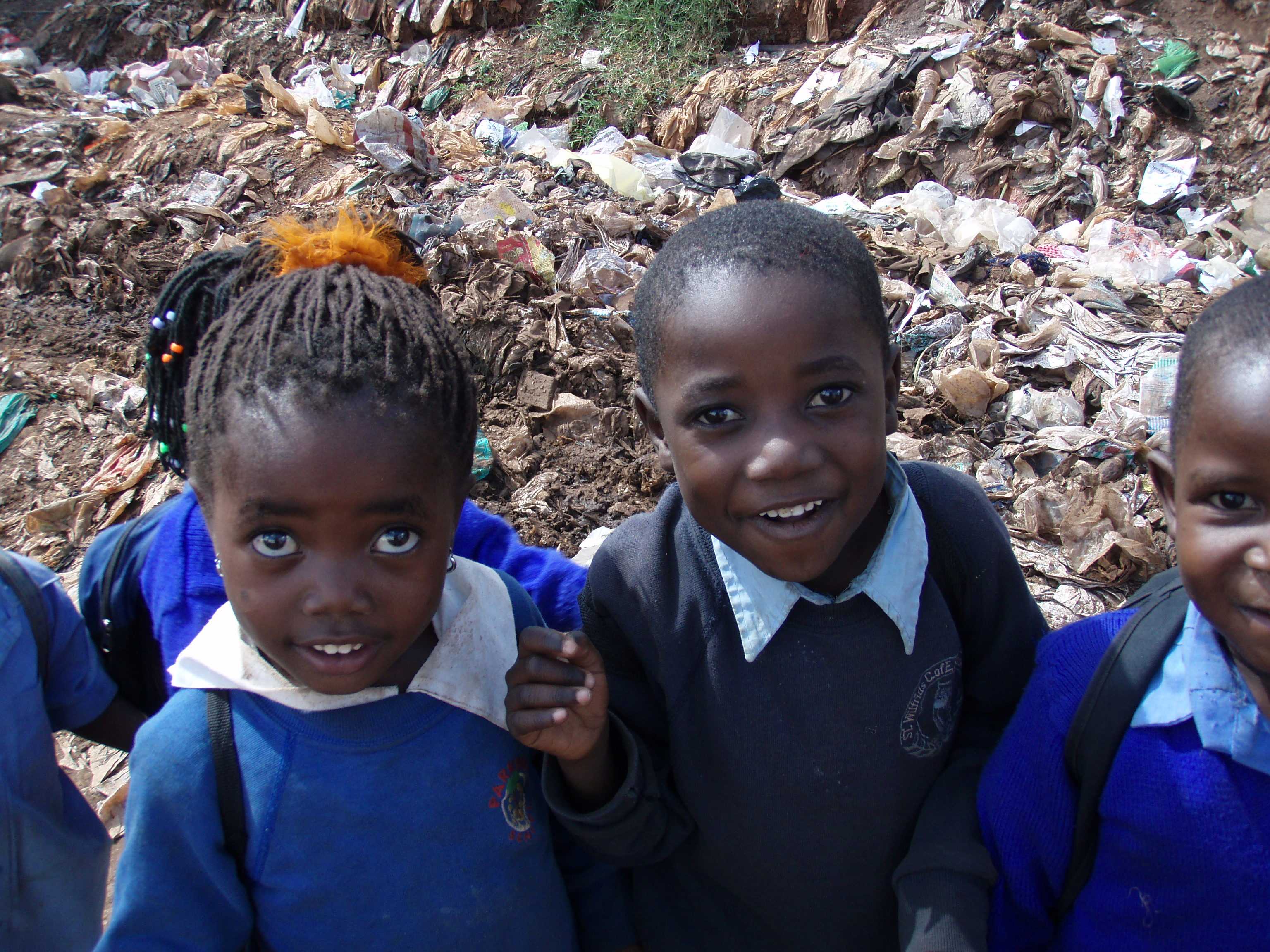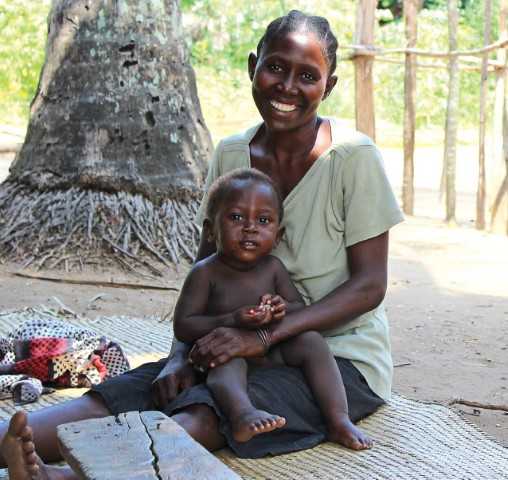Global Disease Detection Stories: Unlocking the Mystery of Childhood Deaths in Kenya
Kenya is determined to save children’s lives by understanding why they are dying. Respiratory tract infections, particularly pneumonia, are a leading cause of death in Kenyan children under the age of five years.

Researchers in Kenya are working to prevent respiratory deaths among children.
According to the World Health Organization, pneumonia is the second leading cause of death among children under the age of five years. In Kenya, efforts are underway to figure out which infections are killing young children, and why.
A new study called the Pediatric Respiratory Etiology Surveillance Study (PRESS) is yielding some of the first comprehensive data on respiratory deaths among children in Africa. Researchers hope the study will lead to better treatment recommendations and laboratory diagnostics to prevent these deaths in the first place. The study’s success relies on using both cutting-edge science and cultural sensitivity to overcome challenges. They are already seeing results.
Strong partnerships produce strong studies
PRESS was initiated by the Centers for Disease Control and Prevention’s (CDC) Influenza Division through their successful Influenza program in Kenya. CDC’s influenza experts have been working with partners to build stronger surveillance and laboratory systems in Kenya and beyond. PRESS builds on this work while also adopting new strategies. Specifically, the study team needed better ways to gather data – faster, more accurate lab results for sick patients and more information on cause of death. Because the study deals with both children and respiratory disease, the team found that traditional methods were not the best approach. They had to innovate.
Sadness leads to hope
Kenyatta National Hospital, located in Nairobi, is the oldest hospital in Kenya. Built in 1901, it has grown from 40 to 1800 beds and over 6000 staff. The study expands on the hospital’s existing disease tracking system and partners with researchers to collect laboratory samples from children hospitalized in the pediatric and intensive care wards.
In the unfortunate event of a fatal case, meaning that a child dies while in the hospital, the child’s guardians are provided grief counseling and asked permission to conduct an autopsy. The study takes a new approach by offering parents the option of a minimally invasive autopsy, which is considered more culturally acceptable, easier to conduct in the field, and more cost effective. Information collected from the autopsy is later compared to laboratory results.
At first it was difficult to get parental consent for autopsies, so researchers asked for feedback. They realized that they were approaching people at a very critical time, right after losing a child. They changed their approach to offer professional counseling sessions for the parents that helped them cope with their tragic losses. They waited a day after counseling to call the parents and offer participation. By integrating counseling, consent rates increased to 60%, which is excellent for this type of study.
Dr. Henry Njuguna, one of the study’s principal investigators in Kenya, notes, “Despite working in sorrowful and emotionally draining moments following death, study staff are encouraged to identify the causes of these deaths and prevent similar deaths in the future.”
Innovation in the laboratory
A groundbreaking study in Kenya is producing some of the most comprehensive data on respiratory deaths among children in Africa.
Another critical component of the study is laboratory testing. It can be difficult to tell one respiratory infection from another based on symptoms alone. Testing is needed to determine the nature of the infection: is it from a bacterial, viral, or parasitic organism? In addition, the number of tests that can be performed on a single specimen is limited.
To address these issues, the study team adopted a multiple-pathogen technology called the TaqMan® Array Card (TAC). The benefit of this diagnostic test is that it is comprehensive and fast. It can diagnose between 20-40 pathogens for up to eight patients at the same time, and do it within 2.5 hours. It works well in developing countries because it is not as labor intensive as individual testing, which only tests for one pathogen or one patient at a time. The mixture is simple to prepare and the card is easy to load.
Analyzing the molecular data from the card in tandem with the pathological data from the autopsies is a groundbreaking approach that could unlock the mystery of why so many young children die of respiratory disease.
Data makes the difference
The more we know, the more we can do to prevent infection. “We don’t do any studies just to do studies,” says CDC’s Dr. Joshua Mott. “All of them are done with the intent of making recommendations to improve health – for example, how we prioritize vaccines and what approaches we take for managing respiratory disease in the hospital. We are able to look at which children die and which children don’t. Some of these recommendations will come at the end of the study and some happen as a part of the process.”

Lessons learned from the work in Kenya will continue to benefit communities worldwide.
The study is already providing data that can be used by healthcare workers at Kenyatta National Hospital. Testing picked up an outbreak of respiratory syncytial virus (RSV) in the neonatal ward, which led to improved infection control practices and helped stop the spread of the virus. In addition to finding the causes of respiratory diseases like RSV, the tests often detect other infections that suggest underlying HIV disease. This shows that a number of children are coming into the hospital with fatal respiratory disease that is secondary to an HIV infection. This reveals a tragic gap in undetected and undiagnosed HIV.
Kenyan pathology and pediatric residents are mentored on how to evaluate cases and interpret findings. CDC’s pathology experts from the Division of High Consequence Pathogens and Pathology are helping to provide this support. Access to this expertise benefits the local clinicians and helps CDC scientists better understand and operate in African contexts.
“When CDC experts like Dr. Sherif Zaki come to Kenya to provide results to clinicians about the cause of a child’s death, the passion in those clinician’s faces when they finally get an understanding of what is going on is evident,” said Joshua.
The finish line: challenges and opportunities
The next step is to finish collecting patient data and continue to analyze it. This is no easy task: each TAC card produces nearly 400 data points, not including the data generated from the minimally invasive autopsy and other tissue samples. Analyzing molecular and pathological information together presents both a challenge and an opportunity to truly understand the cause of respiratory disease among children. Figuring out how to manage these data is necessary to reap the benefits of bringing these technologies together for the first time.
While developed for one project, both the multi-pathogen diagnostic test and the minimally invasive autopsy can be expanded to other countries and regions. Lessons learned from the work in Kenya will continue to benefit communities worldwide.
A commitment to reducing childhood deaths through the Pediatric Respiratory Etiology Surveillance Study is being led by CDC’s Influenza Division in collaboration with Kenyatta National Hospital. Support is also provided by CDC’s Division of High Consequence Pathogens and Pathology. This work is coordinated through the GDD Center in Kenya, which is part of CDC’s country office. Kenya is one of 30 U.S. partner countries named in the Global Health Security Agenda.
- Page last reviewed: December 15, 2015
- Page last updated: December 15, 2015
- Content source:


 ShareCompartir
ShareCompartir